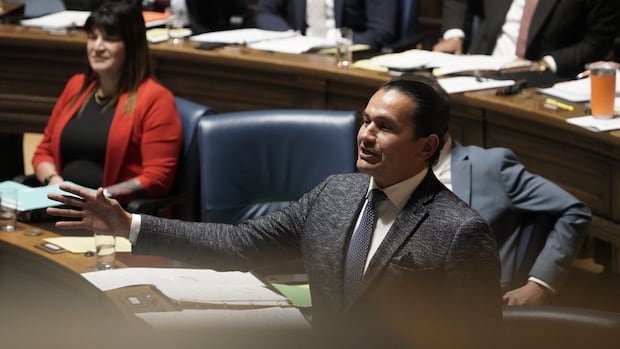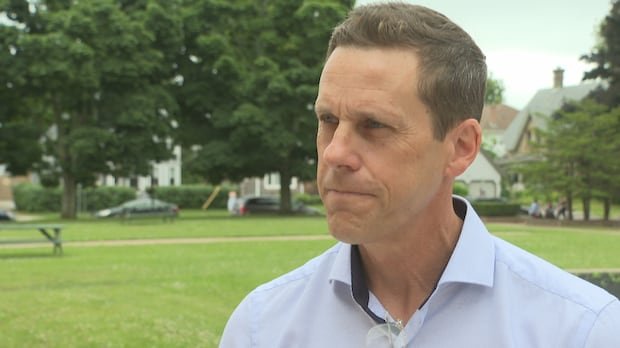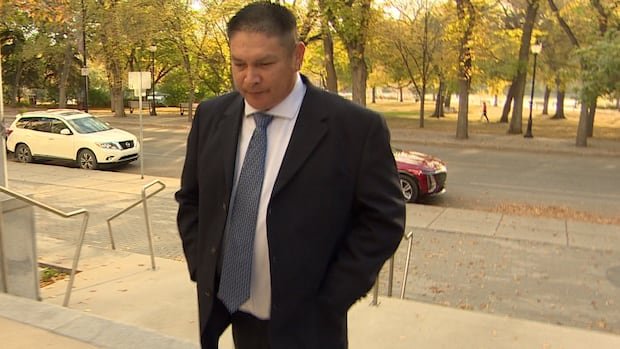One of the key issues of the current teachers’ strike in Alberta is class sizesBut it’s difficult to give precise numbers on how large classes have become because the province no longer specifically collects that data.
Alberta used to publish class size data annually, detailing the number of students in each class in more than 1,500 schools across the province.
In 2019, the newly elected UCP government put an end to that practice.
The following year, the government also changed the per-student funding formula for school boards, which had tied funding growth to enrollment growth annually, in favor of a Three-year “weighted moving average” (WMA) instead.
Larger school boards, particularly in fast-growing cities, have lamented the new formula since it was announced in February 2020.
“This means our funding will be based on the number of students we have had in our classrooms in previous years,” said Trisha Estabrooks, who served as president of Edmonton Public Schools. he said at that time.
“In essence, it’s like looking in the rearview mirror and we’ll never be able to catch up.”
The change came into effect amid the pandemic
The change came into effect in September 2020, in the depths of the COVID-19 pandemic, which saw a short declining enrollment period.
This was followed by a increase in enrollmentBut because the new formula uses enrollment figures from previous years as part of its calculations, many school boards received less money than they would have received under the old formula.
Complaints about the formula have continued year after year.
“This new WMA funding model benefits school divisions with declining enrollment, which are often located in rural areas,” the Elk Island Public Schools authority, which operates out of Sherwood Park, explained in a January 2025 presentation.
“For school divisions with increasing enrollment, the WMA model creates a funding gap.”
However, it is difficult to quantify exactly how this new funding formula has affected class sizes, as the Alberta government stopped collecting data on class sizes the year before changing the formula.
But it’s still possible to get a rough idea of how much Alberta’s teaching workforce has grown compared to how much student enrollment has increased since the change was introduced.
Digging the data
As part of its annual budget documents, the provincial government publishes the number of “certified staff” working for school boards in terms of full-time equivalent positions. These figures give an idea of how many teachers are working in the province.
It’s not a perfect measure, as not all certified staff necessarily work directly with students in classrooms, and there is no breakdown of teaching staff by city, let alone by school, let alone by class.
But at least it allows us to see, in general terms, how the growth of certified personnel compares with the growth of enrollment at the provincial level. (The Alberta government still releases enrollment figures annually.)
When we compare these two figures, we can see that teaching staff and student enrollment tended to remain fairly close to each other until about 2021.
From that moment on, a gap emerges: enrollment growth exceeds teaching staff growth.
That gap has persisted into the school year that ended in 2025, the most recent for which enrollment figures are available. (Those figures are still preliminary and subject to revision.)
Overall, by these measures, student enrollment has grown 15 percent since 2016-17, while teaching staff has grown just eight percent.
Darryl Hunter, a professor of educational policy studies at the University of Alberta, reviewed this analysis of the available data and cautions that, on its own, it does not prove that the change in the funding formula caused the gap between student enrollment and faculty.
“As you know, correlations do not equal causation,” he said.
“You can point out that they coincide… but whether it was the cause is another question entirely.”
However, school board officials have had no problem in the past directly tying the WMA formula to increases in class sizes and financing gap.
“This funding model is not in the best interest of students,” Edmonton Public Schools trustee Dawn Hancock said in May 2024. “And I hope our government sees that and makes a change.”
The following year, the government did just that.
Another new formula
As part of its 2025-26 budget, the provincial government unveiled a new two-year weighted average to replace the three-year formula.
The three-year formula calculated average enrollment by looking at the previous year (which received a 20 percent weight), estimates for the current year (30 percent weight), and projected enrollment for the following year (50 percent weight).
The new two-year formula includes only the current year (30 percent weight) and projected enrollment for the following year (70 percent weight).
“Move to a two-year period [calculation] “It’s our attempt to hopefully strike the right balance to be able to get dollars to the fast-growing school divisions in a much quicker way, and also provide as much long-term stability as possible to the smaller school divisions,” said Education Minister Demetrios Nicolaides. said in March.
The Ministry of Education did not respond by deadline to a request for comment on this story.
The new formula takes effect for the 2025-26 school year.
Alberta School Boards Association president Ken Glazebrook described the change as “a positive first step.”
“It is well known that classrooms are overcrowded and resources are limited,” said Glazebrook, whose organization promotes parent perspectives and promotes dialogue between families and school officials.
“We will recognize that the government has tried to rectify some of that problem by changing the weighted moving average from three years to two years.”
The 2025-26 budget also included the hiring of approximately 1,045 new full-time equivalent certified teachers, representing a 2.7 percent increase over the previous year.
However, for the Alberta Teachers Association (ATA), this is not enough.
Reports, recommendations and democracy
The ATA wants the government to do more to address what it describes as an accumulated deficit in the number of active teachers in the province.
ATA President Jason Schilling has said more than 5,000 new teachers are needed to reach the student-teacher ratio recommended in a 2003 provincial report, released after the last major teachers’ strike in Alberta.
A key issue in the Alberta teachers’ strike is class size and complexity. While the province rejects limiting class sizes, an education expert is looking at how teacher-student ratios affect academic success.
While Alberta canceled its detailed class size reporting in 2019, Edmonton Public Schools still tracks this datasuggesting that class sizes in many schools remain much larger than the recommendations in that 22-year-old report.
Anecdotes from teachers, students and parents in other school divisions also suggest that class sizes exceed those recommendations, but accurate numbers are harder to come by.
Hunter, of the University of Alberta, said it would be “immensely useful” to have the kind of detailed data on class sizes that the province used to collect and publish annually.
“It might cause a little distress to put some of this stuff in the public domain, but hey, we live in a democracy,” he said.
“Student-to-teacher ratios are a key performance indicator for any system…and people want to know what those numbers are.”









